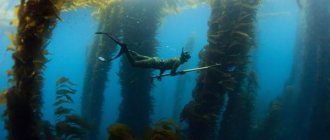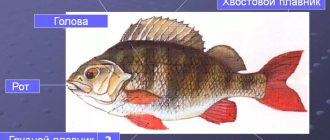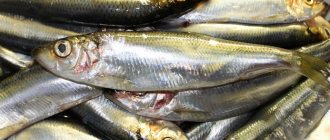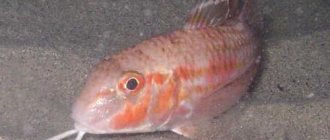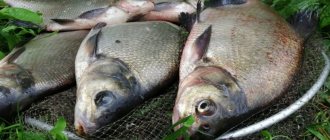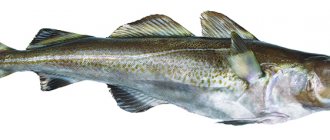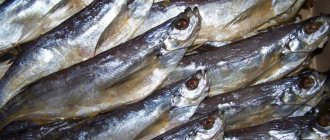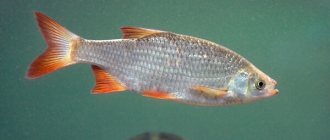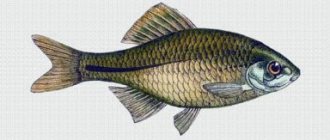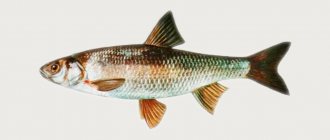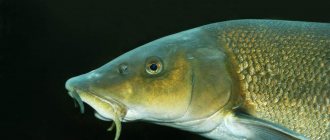general information
Horse mackerel
The horse mackerel fish belongs to the family Stavrididae and unites several species of important commercial fish under one name. In total, the Stavrid family includes about 150 species of fish, and only four of them are eaten and caught on an industrial scale. Horse mackerel belongs to the group of pelagic fish that lead a schooling lifestyle.
There are such types of mackerel fish as:
- Common horse mackerel or Trachurus, a genus of predatory fish that lives in sea waters.
- The yellowstripe or Selaroides leptolepis is a small, schooling fish that lives in the seas.
Horse mackerel
Horse mackerel
(Trachurus) is a genus of marine fish of the horse mackerel family of the order Perciformes.
Commercial species of the horse mackerel family, which are not part of the genus Trachurus, are also known under this name. In total, the genus of horse mackerel has about 15 different species, the most famous of which are: - Common horse mackerel
(Trachurus trachurus).
Distributed mainly in the Atlantic Ocean and the Mediterranean Sea, but also found in the Black, North and Baltic Seas. — Mediterranean horse mackerel
(Trachurus mediterraneus).
Found in the Atlantic Ocean, Mediterranean, Black, Azov and Marmara Seas. — Ocean horse mackerel
(Trachurus picturatus).
Lives in the Eastern Atlantic, including the Bay of Biscay, coastal waters of the Azores and Canary Islands. Also common in the western Mediterranean. — Peruvian horse mackerel
(Trachurus murphyi). The species' range includes the South Pacific Ocean, including the coastal areas of Chile, Peru, New Zealand and southern Australia. Horse mackerel are among the most important commercial fish. Their annual catch volumes range from 300 thousand to 1.4 million tons, with about 90% of the catch coming from Peruvian horse mackerel. To catch horse mackerel, fixed and purse seines are used, as well as pelagic trawls and longlines.
Appearance
Horse mackerels have a spindle-shaped body with a thin caudal peduncle and a forked caudal fin. The body is covered with small scales, and along the lateral line there are spiny bone plates that serve to protect against enemies. The sizes of mackerel are not very large: the average length of the fish is about 30 centimeters with a weight of about 300 grams, and only some individuals grow up to 70 centimeters, gaining weight over a kilogram.
Lifestyle and reproduction
Horse mackerel are schooling pelagic fish that prefer to stay near the continental shelf in warm water. Horse mackerel feed on small fish, zooplankton, cephalopods, as well as crustaceans that live near the bottom. Spawning of mackerel takes place in the warm season. The fertility of fish is quite high: large females can produce over a million eggs, which after spawning remain floating in the water column. Hatched horse mackerel larvae feed on small plankton and often hide from predators under large jellyfish. The maximum lifespan of horse mackerel is nine years.
Spring view
In representatives of the horse mackerel family, the body is laterally compressed, but its shape can be different. Thus, the common horse mackerel has a very elongated, spindle-shaped body, covered with small scales. Horse mackerel has 2 fins on its back. The first of them, the front and short one, has spines ranging from 3 to 9. The rear and long fin has soft feathers ranging from 18 to 37 pieces.
The color of mackerel is interesting, which can range from light silver to gray-blue. There are also peculiarities in the structure of horse mackerel fish. The body of the fish is elongated, as a rule, does not exceed 35 cm in length. Horse mackerel has a sawtooth comb, which serves as a protective weapon for the fish against other predators. The largest specimen of mackerel fish reached 70 cm in length and weighed 2 kg. This is truly a record for a fish whose weight rarely exceeds 500 grams.
How to cook horse mackerel?
The product's flesh is tender and not bony.
The taste of the meat is original, it has a slight sourness.
The product is sold in stores both frozen and fresh.
Numerous recipes for horse mackerel dishes have been developed.
Fish meat can be:
- marinate;
- stew;
- cook;
- fry in oil or on a grill;
- salt;
- dry.
You can smoke meat.
A very tasty dish is mackerel baked in the oven.
The product makes aromatic soups and hot/cold appetizers. Consumers also love canned food with butter, in its own juice or in tomato sauce.
Preservation is used as an independent dish or as a component for pates, sandwiches or salads.
Horse mackerel fishing
Horse mackerel fish is very capricious in terms of fishing; it is not as easy to catch as it might seem at first glance.
When catching this fish, it is necessary to pay very important attention to the quality of the tackle. If the fishing rod is of poor quality or made carelessly, for example, it has an inappropriate weight, the length of the leash does not meet the standards, or an unsuitable hook, then you are unlikely to be able to enjoy the catch. Therefore, it is advised to approach the preparation of hooks very carefully; they must be properly tied, accurately tinned. Family Horse mackerel
When horse mackerel is larger in size, it is less demanding to catch. Its fishing is more stable; in this case, the hook and line can be selected in larger sizes. From August to April there is a very good bite of small-sized mackerel, although it is worth noting that the rest of the time the bite remains at a fairly good level.
Especially excellent fishing occurs when the wind changes and there is a small wave on the water. For example, on the Caucasus coast in the first half of the day the wind blows from the sea to the shore, and in the evening everything happens the other way around. Typically, the sunnier the day, the greater the fluctuation in temperature between water and land and the stronger the wind blows. In the first half of the day and in the second, the wind changes its direction.
In the morning, when the earth warms up and the wind weakens, and then completely calms down and after a certain time blows from the water, the best bite begins. As for the depth at which mackerel fish are caught, it is difficult to accurately name this figure, since it happens that it grabs the hook on the move, not allowing it to fall. But more often it is caught at the bottom.
If we take statistical data, we can see that this fish lives in all layers of the sea, starting from great depths, which reach sixty-five meters and up to the very top layers. It is noteworthy that when a school of fish rises from the lower layers to the top, it creates a sound very reminiscent of the noise of a strong wind. At such moments, it is unsurpassed when caught using a spinning rod, and several fish are grabbed at once.
In appearance, the mackerel fish is simply beautiful, with a whitish-pink pearlescent color, greener in the back area, very smooth and mirror-like. It is impossible not to pay attention to the correct shape of the fish, as well as the fact that the line running near the tail is covered with hard shields. You should remove the mackerel from the hook very carefully; attention should be paid to the abdominal area, where it has several spines that are very sharp and can injure your hand.
How do fish spawn?
A distinctive feature of the fish from many of its relatives is the fact that the fish spawns in the warm waters of tropical countries almost all year round. In the warm season, horse mackerel prefers to lay eggs in mid-latitude waters.
Carp fish - description, main types, useful properties, habitats, catching + 78 photos- Loach - fish lifestyle, nutrition, reproduction process + 71 photos
Pike - appearance, habitats, nutrition, varieties, spawning + 86 photos
Horse mackerel is considered the most prolific fish; it can lay from one and a half thousand to two hundred thousand eggs at a time.
As soon as the fry emerge from the eggs, before reaching one year of age, they attach themselves under the dome of the jellyfish, thus escaping from predators. Young fish also eat zooplankton.Reproduction and lifespan
Most horse mackerel prefer a warmer environment, and therefore spend their lives in tropical and near-tropical waters. There is an opportunity to lay eggs all year round. And during the season, when warm temperatures come to temperate latitudes and favorable conditions are created, fish tend to move there to spawn.
Representatives of the Black Sea subspecies have the opportunity to continue their genus only during the period suitable for this, which occurs approximately in May-June. At this time, previously existing flocks disintegrate, and others arise, formed according to gender.
Among their fish relatives, horse mackerels are considered record holders for fertility. At a time, they are capable of laying up to 200 thousand eggs, which are concentrated and begin to develop with magical speed in the upper water layers. But at first these are just small formations, no more than a millimeter in diameter.
The fate of Black Sea mackerel caviar , like other species of these fish, is very interesting. In an effort to protect the fry that soon emerge from it from predators, nature endowed them with amazing wisdom. They escape from the dangers of the world under the dome of jellyfish, attaching themselves to it like under the roof of a house.
Babies grow at a rapid pace, reaching a length of 12 cm at the age of one. Around the same period, sometimes a little later, they become capable of giving birth. The total lifespan of these fish is about 9 years.
Significance for fishing
Industrial fishing for horse mackerel in the Black Sea is thriving and is a vital part of the fishing business. In general, regardless of the region, the total weight of fish caught can reach 1.5 million tons.
Moreover, the Peruvian species makes up 90% of this mass. For the Russian fishery, the most important representative remains the common horse mackerel.
Black Sea horse mackerel fishing methods and necessary gear
You can catch mackerel in completely different ways: with a long spinning rod, a fishing rod from the side or a float net. Fishing for horse mackerel is necessary using unattached tackle of a complex structure with a large number of hooks. In this case, the golden rule works: the greater the number of hooks used, the longer the rod used should be. You can also catch horse mackerel by hand; this method is especially effective when fishing vertically.
The main advantage of this method is that the fishing line does not get confused with the gear located nearby. As a result, the Black Sea horse mackerel tenaciously grabs the bait and the fisherman can only catch it. Often, fishing for Black Sea horse mackerel using the above-mentioned method has the following distinctive features: a thin, light line is used, the length of which varies from 3 to 5 meters (it has a thin whip with a fishing line with a diameter of 0.2 millimeters), a sliding weight weighing 5 grams and reins with a fishing line are also used 0.18 millimeters, the hook should be shiny, silver, fifth or sixth models.
When fishing for horse mackerel from a high-speed boat, you will need good, warm outerwear, high-quality gear, a container for collecting caught specimens, a sufficient supply of drinking water and food (since the boat sets sail in the early morning and returns at night). When using this method of fishing, you will need a spinning rod with a special spinning reel and a fairly tenacious whip.
However, experienced fishermen note that for this you can use the usual Rostov inertial models. The main line should have a diameter of 0.4 millimeters. In addition to the fishing line, you will also need a stake on a large swivel, made from ordinary fishing line with a diameter of 0.18 millimeters. The number of hooks on the bet should be 9-10 (the hooks should have a model 6 shank). Special condition: at the end there must be a weight weighing 120 grams.
Catching horse mackerel with a tyrant
Fishing for horse mackerel with a tyrant is excellent for catching predatory fish. That is why the tyrant is perfect for catching Black Sea horse mackerel; it is a spectacular, memorable and effective way of catching this voracious fish. The name of this gear suggests that not different types of bait are used, but “decoys” - special bright shiny elements that attract the attention of fish.
If you are going to use this method of catching mackerel, then you will need a hard, strong rod 3.5 meters long (after all, mackerel is a fast, predatory fish). Test indicators should be about 70-120 grams. As already mentioned, the number of hooks used should correspond to the length of the selected fishing rod. Let's give an example: if ten or more hooks are used, then the length of the rod should be approximately 2.8 meters. Advice for novice fishermen: When choosing a reel for fishing for horse mackerel, you should focus on the intended fishing method. When fishing from the shore, you should use spinning reels of different models. If you are going to catch Black Sea mackerel vertically, then you should select inertial reels.
